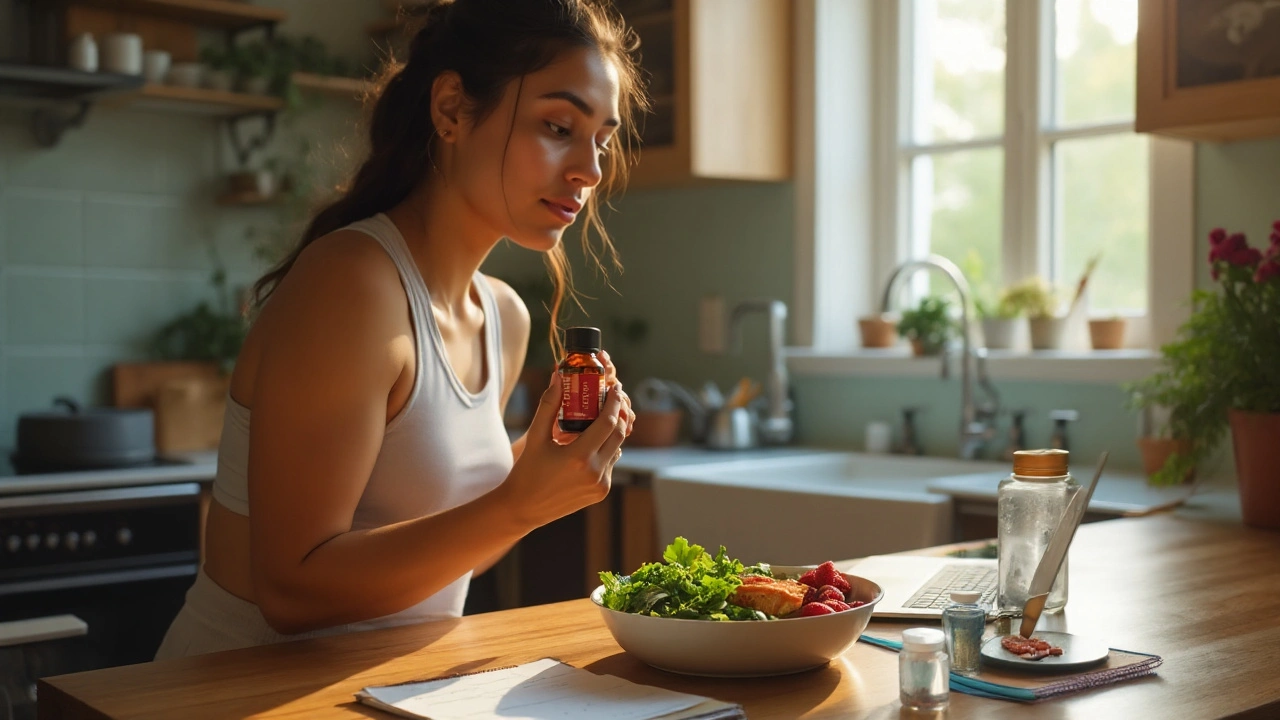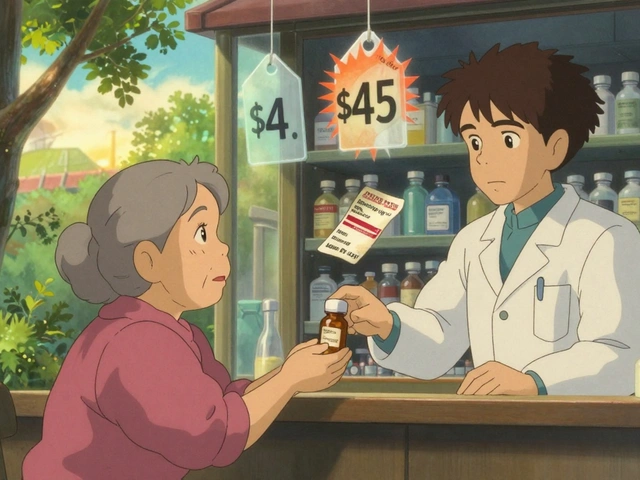
You want a simple way to shore up your daily nutrition without choking down another grassy green powder. Brooklime sounds intriguing-an old-school aquatic herb bottled into a modern capsule. Here’s the reality: it can complement a balanced diet, but it’s not a magic multivitamin or a shortcut past vegetables. The smart play is to understand what it is, what we actually know, and how to use it safely so you get upside with minimal risk.
TL;DR
- Brooklime (Veronica beccabunga) is a mild, salad-type herb; supplements aim to offer phytonutrients, not a complete vitamin fix.
- Human clinical trials are scarce; most evidence is lab-based. Treat it as a supportive add-on, not a proven therapy.
- In Australia, look for an AUST L/AUST R number (TGA). Start low, track how you feel, and keep your veggie intake consistent.
- Good for people who struggle with leafy greens and want variety; not ideal if you need tight vitamin K control (warfarin) or are pregnant.
- Use a clear plan: check quality, avoid proprietary mystery blends, and integrate it with meals rather than replacing them.
What brooklime is-and what it can (and can’t) do for your nutrition
Brooklime is Veronica beccabunga L., an aquatic plant in the Plantaginaceae family, historically eaten as a mild, peppery salad herb in parts of Europe. Think of it as a cousin to watercress in vibe, not a copy. Supplements typically deliver dried leaf or aerial-part extracts in capsules or tablets. The pitch is simple: give your body a small lift in plant compounds when your plate is a bit beige.
Here’s the part most labels won’t emphasize: there are very few, if any, robust human clinical trials on brooklime itself. Most of what we know comes from lab assays (antioxidant activity, phenolic content) and broader research on related Veronica species. That’s suggestive, not definitive. If you want a sure-fire, clinically proven outcome, brooklime isn’t that. If you want a low-stakes way to add some plant diversity, it fits.
Where could it practically help? Three areas:
- Dietary “gap-filling”: days when you miss your veggie target and want extra phytonutrients.
- Palate fatigue: it adds variety to the leafy-green rotation without tasting like mown lawn.
- Habit stacking: a visible capsule at breakfast can nudge you to also grab real greens at lunch.
But let’s set expectations. A capsule won’t replace a plate. The Australian Dietary Guidelines recommend around 5-6 serves of vegetables for adults daily (NHMRC). Most Australians fall short. If you’re serious about better nutrition, think “whole foods first,” supplements second.
| Nutrition target (AU) | Typical reality | What brooklime can contribute | Confidence |
|---|---|---|---|
| 5-6 serves of vegetables/day (NHMRC) | Fewer than 1 in 10 adults meet this (ABS 2021-22) | Convenient phytonutrient top-up; not a replacement for serves | High (on role), Low (on magnitude) |
| Dietary variety (leafy greens, herbs) | Repetition and “greens fatigue” are common | Alternative leafy-herb profile to mix things up | Moderate |
| Antioxidant intake | Often tied to fruit/veg intake | Lab assays suggest activity in Veronica species; human data limited | Low-Moderate |
Quick note on evidence and safety:
- Taxonomy is well established (Royal Botanic Gardens, Kew, Plants of the World Online).
- Human efficacy data for brooklime is limited. I could not find solid randomized trials in PubMed as of 2025.
- In Australia, complementary medicines are regulated by the TGA under the Therapeutic Goods Act 1989. Listed medicines (AUST L) must meet quality and safety standards and use permitted indications; efficacy is not individually evaluated unless the product is registered (AUST R).
What about micronutrients like vitamin K or C? Because processing varies (fresh vs dried, extract strength), the final vitamin content can swing a lot. If a product reports vitamin K content on the label, take it seriously-especially if you’re on warfarin and need consistent vitamin K intake (clinical guidance generally recommends keeping vitamin K steady, not low). If the label doesn’t quantify vitamins, assume only modest contributions and don’t use it to correct a deficiency.

How to choose and use a brooklime supplement safely (step-by-step + decision guide)
If you’re going to try it, set it up right. Here’s a practical framework I use with any niche herb, including brooklime supplement products.
- Identify the job-to-be-done. What problem do you want to solve? Examples: “Add plant diversity,” “Get a small phytonutrient bump on busy days,” “Support recovery after training with more greens.” If the job is “replace vegetables” or “treat a condition,” pick a different approach.
- Check the label for transparency. Look for botanical name (Veronica beccabunga), plant part (leaf/aerial parts), extraction ratio (e.g., 5:1), and any standardization (e.g., total phenolics). Avoid proprietary blends that hide amounts.
- Verify regulatory status (Australia). Check for an AUST L or AUST R number on the front label. No number? Hard pass. This is your basic quality/safety filter locally.
- Scan for excipients and allergens. Keep it simple. Skip unnecessary colourants or flow agents if you’re sensitive. If you’re coeliac or vegan, look for clear statements.
- Start low and slow. Begin at the lowest label dose-often one capsule with food. Run it for 7-14 days before adjusting.
- Track a simple metric. Pick 1-2 signals: digestion comfort (bloating/regularity), energy consistency (mid-afternoon slump), and any skin or sleep changes. Jot down a 1-10 rating daily in your phone.
- Decide to keep or cut. If you see no benefit by week 3, save your money. Supplements should earn their keep.
Common red flags I watch for:
- “Detox” or disease-treatment claims. That’s marketing, not medicine.
- No Latin name or plant part listed. If they won’t tell you what’s inside, assume the worst.
- Dusting doses (micrograms of herb across a 12-ingredient blend). Real effects need real amounts.
| Label cue (AU) | What it actually means | What to do with it |
|---|---|---|
| AUST L number | Listed medicine: meets TGA quality/safety; permitted indications | Basic quality filter; still judge the formula and dose |
| AUST R number | Registered medicine: stronger evidence review for claims | Rarer for herbs; if present, that’s a higher bar |
| Botanical name and plant part | Exact species and used portion of plant | Non‑negotiable transparency requirement |
| Proprietary blend | Amounts of individual ingredients hidden | Generally avoid unless clinically dosed elsewhere on label |
| Standardized extract | Specific compound level (e.g., phenolics) is controlled | Preferable for consistency, but still monitor your response |
Safety quick hits:
- Medication interactions: If your product lists vitamin K or you’re on warfarin, talk to your prescriber and keep intake consistent. If you take antiplatelets, anticoagulants, or have surgery scheduled, err on the side of caution.
- Pregnancy and breastfeeding: Skip unless your healthcare provider gives the green light-human data on brooklime is thin.
- Allergy history: If you react to other Plantaginaceae plants, trial carefully or avoid.
- Kidney stones sensitivity: Leafy herbs can carry oxalates; if you’ve had calcium-oxalate stones, focus on hydration and discuss with your clinician before adding new greens in concentrated form.
Decision guide (keep or skip?):
- Choose brooklime if your goal is to add plant variety, you tolerate leafy greens well, and you want a mild, low-caffeine, non-stimulating option.
- Skip if you need clinically targeted outcomes (e.g., blood pressure management) or you require tight vitamin K control, or you’re pregnant/breastfeeding.
- Consider alternatives if you prefer stronger evidence or defined nutrients: watercress or spinach in meals, a standardized green tea extract (for catechins), or a dietitian-guided plan.

Putting it to work: examples, checklists, comparisons, and answers
Here’s how I’d actually use brooklime in real life here in Sydney, with a day job, a commute, and the occasional cheeky bakery detour.
7‑day micro‑trial (kept simple):
- Day 1-2: Take the lowest label dose with breakfast. Log digestion and energy at 3 pm.
- Day 3-4: Keep dose steady. Add one serve of leafy greens to lunch (bagged salad counts).
- Day 5-7: If you’ve had zero issues, you can move to the full label dose. Keep logging.
What you’re looking for: no GI irritation, a subtle bump in “feel-good” after meals (less heavy, fewer slumps), and easier consistency with greens at meals. If nothing changes or you feel off, stop-no hard feelings.
How to pair it with food:
- With fat: A little olive oil or avocado can help absorb fat-soluble nutrients if present.
- With protein: Add it to a protein-rich meal to avoid nausea some people get with herbals on an empty stomach.
- Hydration: Take with a glass of water to avoid throat irritation from dry capsules.
Who might notice the most benefit?
- Busy professionals who get two serves of veg on a good day and want a gentle nudge upward.
- Recreational athletes who want plant diversity without caffeine or stimulants.
- “Texture-averse” eaters who struggle with certain greens but can manage a capsule.
Who likely won’t?
- People seeking therapy-level outcomes (e.g., lipid lowering, blood sugar control). That’s a job for proven diet and meds under guidance.
- Supplements skeptics who already nail 5-6 serves of diverse veg daily. You’re doing great-spend elsewhere.
Comparison in plain English:
- Brooklime vs watercress: Similar family feel as leafy aquatic herbs. Watercress has more culinary and research history; brooklime brings variety. If you love watercress, you don’t need both.
- Brooklime vs greens powders: Powders often bundle many ingredients at low doses. Brooklime alone keeps it simple and avoids hidden caffeine or flavoring. Powders can be convenient if you like smoothies; check doses.
- Brooklime vs a multivitamin: Different jobs. A multi targets essential micronutrients with known RDIs. Brooklime targets plant phytonutrients and dietary variety.
Shopping checklist (print or screenshot):
- Botanical name listed: Veronica beccabunga
- Plant part + extraction ratio are clear
- AUST L or AUST R number present (Australia)
- No proprietary blends hiding amounts
- Allergen status matches your needs (gluten-free, vegan, etc.)
- Reasonable capsule count for one month (30-60 servings)
- Company provides batch testing or COA on request
Use checklist (first month):
- Start at the lowest dose with food
- Track two signals (digestion and mid-afternoon energy)
- Hold dose steady for 2 weeks before changes
- Keep veggie intake consistent; don’t use this to skip salads
- Review at day 21: keep, adjust, or cut based on your notes
Evidence snapshot (what we know vs what we don’t):
| Potential effect | Evidence type | Takeaway | Confidence |
|---|---|---|---|
| Antioxidant activity | In vitro assays on Veronica species | Signals are there; translation to human outcomes unproven | Low-Moderate |
| Anti-inflammatory signaling | Cell/animal models (species vary) | Mechanistic potential; human relevance unknown | Low |
| Micronutrient contribution | Traditional use and herb profiles | Likely modest; processing can reduce vitamins | Moderate (on modesty) |
| Digestive comfort | Anecdotal and herbal theory | Possible gentle support; individual response varies | Low |
Mini‑FAQ
- Is brooklime safe long term? If you tolerate it well and your clinician has no concerns, many people cycle herbs for months at a time. Given limited human data, I prefer a 12‑weeks‑on, 4‑weeks‑off rhythm while monitoring how I feel.
- Can I take it with coffee or pre‑workout? Yes, there’s no stimulant in brooklime. If your pre‑workout has caffeine, space doses if you’re sensitive.
- Will it help me lose weight? It’s not a weight‑loss product. At best it supports a diet pattern that’s higher in plants, which can help weight goals indirectly.
- Can I open the capsule and sprinkle it into food? Usually yes, but it may taste herbal/earthy. Check the label; some capsules protect taste or light-sensitive compounds.
- What if I’m already taking a multivitamin? No problem. They do different jobs. Just avoid doubling up on products with added vitamin K if you need to keep it stable.
Next steps
- If you’re curious but cautious: Buy a one‑month supply that meets the checklist. Start at half dose for the first week. Keep notes.
- If you’re on prescription meds: Ask your GP or pharmacist, especially for anticoagulants, antiplatelets, and any surgery plans.
- If you want food‑first wins: Add one daily leafy serve (spinach or watercress) for two weeks. Then decide if brooklime earns a spot.
Troubleshooting
- Stomach upset: Take with a full meal, not just a snack. If it persists, stop.
- No noticeable benefit after 3 weeks: Discontinue. Try a different approach (dietitian consult, meal prep, or a more studied green like watercress in meals).
- Energy dip or headaches: Check hydration and caffeine timing. Pause the supplement for a week and re‑challenge at a lower dose to confirm if it’s the cause.
- On warfarin and your INR shifts: Don’t adjust meds yourself. Call your care team, share what you added, and keep intake consistent once a plan is set.
Credibility notes (so you know what’s behind the curtain):
- Taxonomy: Veronica beccabunga L., Plantaginaceae (Royal Botanic Gardens, Kew, Plants of the World Online)
- Australian regulation: Therapeutic Goods Act 1989; TGA framework for listed vs registered medicines
- Dietary guidance: Australian Dietary Guidelines (NHMRC)
- Population intake: Australian Bureau of Statistics, National Health Survey 2021-22 (low proportion meeting veg targets)
- Evidence gap: As of 2025, I’m not seeing randomized human trials on brooklime in major databases; most signals come from lab or animal work on Veronica species
Bottom line: brooklime can help you stack small wins if your goal is better plant diversity and a gentle phytonutrient nudge. Use it like a sidekick, not a star-food first, label‑smart, and check in with your body as you go.
17 Comments
Write a comment
More Articles

Cabergoline for Acromegaly: How This Dopamine Agonist Offers a New Hope
Explore how Cabergoline works as a promising treatment for acromegaly, its benefits, side‑effects, and how it measures up against other therapies.



Ryan Tanner
September 7, 2025 AT 17:14Love this breakdown-so many people treat supplements like magic pills. Brooklime? Sure, if you’re trying to add variety without turning your salad into a grass clump. But please, just eat your spinach. Capsules don’t replace real food. I’ve been doing the 5-serve veg challenge for 3 months now and honestly? I feel like a new person. No magic, just consistency. 🌱